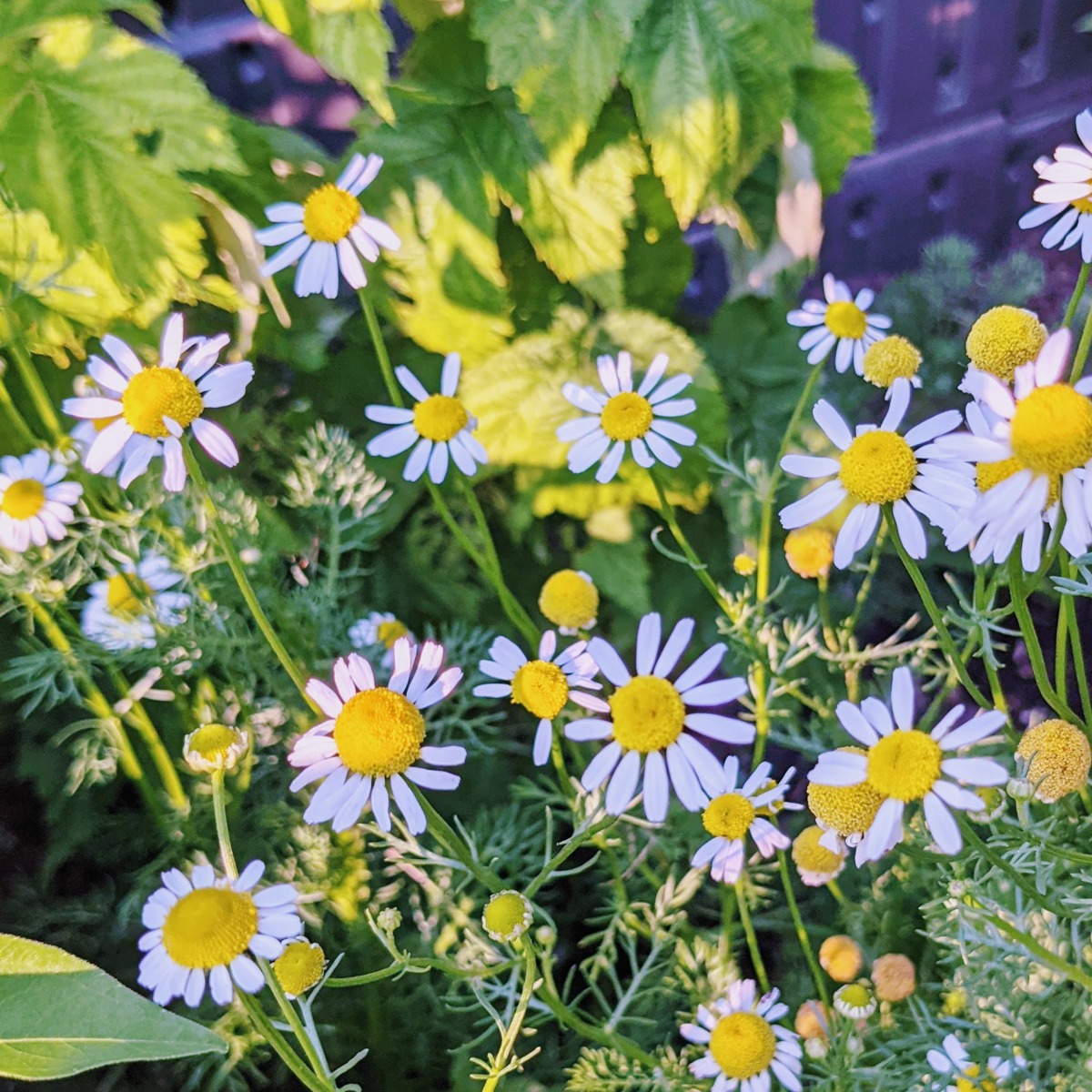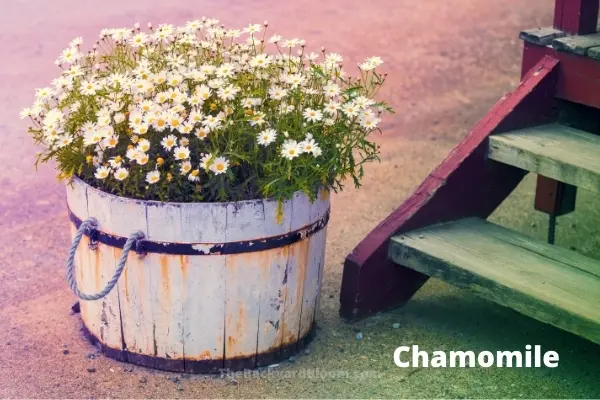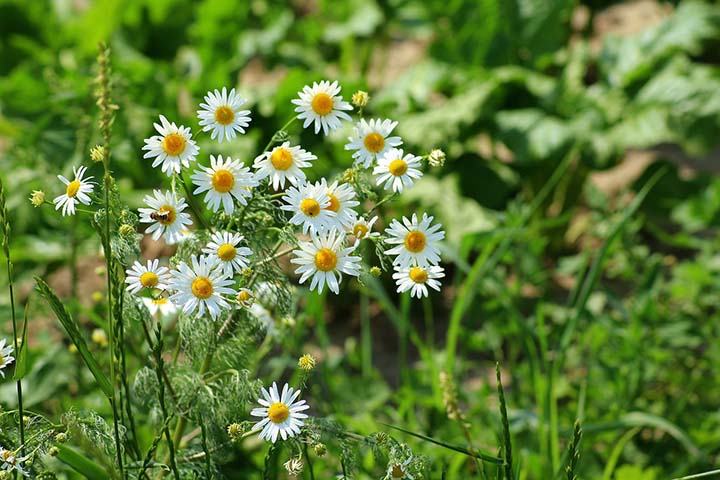Chamomile Companion Plants: The Best To Grow Together
Title: Chamomile Companion Plants: The Best to Grow Together
Introduction:
Chamomile is a beautiful and versatile herb that can be used for both culinary and medicinal purposes. It is also a great companion plant, meaning that it can help to improve the growth and health of other plants in your garden.
In this blog post, we will discuss the best companion plants for chamomile. We will also cover some of the benefits of companion planting, and how to choose the right companion plants for your garden.
Main Content:
Benefits of Companion Planting
There are many benefits to companion planting. Some of the most common benefits include:
- Improved plant growth: Companion plants can help to improve the growth of other plants by attracting beneficial insects, deterring pests, and providing shade or windbreak.
- Increased yields: Companion planting can help to increase the yields of your crops. For example, chamomile can help to increase the yield of tomatoes by attracting beneficial insects that help to pollinate the tomatoes.
- Reduced pest problems: Companion plants can help to reduce pest problems by attracting beneficial insects that prey on pests, or by masking the scent of plants that are attractive to pests.
- Improved soil health: Companion plants can help to improve soil health by fixing nitrogen, providing organic matter, and suppressing weeds.
Choosing Companion Plants for Chamomile
When choosing companion plants for chamomile, there are a few things to keep in mind. First, you want to choose plants that have similar growing requirements. Chamomile prefers full sun and well-drained soil, so you will want to choose companion plants that have similar needs.
Second, you want to choose plants that will benefit from each other's presence. For example, chamomile can help to repel pests from other plants, so it is a good companion plant for vegetables that are susceptible to pests.
Finally, you want to choose plants that you will enjoy growing together. If you like the look of chamomile, you might want to choose companion plants that have similar flowers or foliage.
Some of the Best Companion Plants for Chamomile
Some of the best companion plants for chamomile include:
- Cucumbers: Chamomile helps to repel cucumber beetles, so it is a great companion plant for cucumbers.
- Basil: Chamomile and basil both have strong scents, and they help to repel each other's pests.
- Fruit trees: Chamomile can help to prevent fungal infections in fruit trees.
- Brassicas: Chamomile helps to mask the scent of brassicas, which makes them less attractive to pests.
- Lettuce: Chamomile helps to repel aphids, which can be a problem for lettuce.
- Onions: Chamomile and onions both have strong scents, and they help to repel each other's pests.
- Marigolds: Marigolds help to attract beneficial insects, which can help to control pests in your garden.
- Dill: Dill helps to attract pollinators, which can help to improve the yield of your crops.
Conclusion
Chamomile is a great companion plant for many different types of plants. By choosing the right companion plants, you can help to improve the growth and health of your garden, and reduce your pest problems.
Chamomile is a popular herb that is known for its calming properties. But did you know that it can also be used as a companion plant? Companion planting is the practice of planting certain plants together to improve their growth and health. Chamomile can be a great companion plant for a variety of other herbs, including:
- Basil: Basil helps to repel pests that can damage chamomile plants.
- Dill: Dill attracts pollinators that help to pollinate chamomile flowers.
- Marigolds: Marigolds help to repel nematodes, which can damage chamomile roots.
- Rosemary: Rosemary helps to improve the flavor of chamomile tea.
If you are interested in learning more about chamomile companion plants, I recommend visiting Home Gardening. This website has a comprehensive list of companion plants for chamomile, as well as information on how to plant and care for these plants.
FAQ of chamomile companion
Q: What are the benefits of chamomile companion planting?
A: Chamomile is a great companion plant for many vegetables, flowers, and herbs. It can help to repel pests, attract beneficial insects, and improve soil health.
Here are some specific benefits of chamomile companion planting:
- Repels pests: Chamomile can help to repel pests such as aphids, cabbage moths, and tomato hornworms.
- Attracts beneficial insects: Chamomile attracts beneficial insects such as ladybugs, lacewings, and hoverflies. These insects help to control pests in the garden.
- Improves soil health: Chamomile is a nitrogen-fixing plant, which means that it can help to improve soil health by adding nitrogen to the soil.
Q: What are some good chamomile companions?
A: Some good chamomile companions include:
- Carrots: Chamomile can help to repel the carrot fly, a common pest of carrots.
- Cucumbers: Chamomile can help to repel cucumber beetles, another common pest of cucumbers.
- Tomatoes: Chamomile can help to repel tomato hornworms, a destructive pest of tomatoes.
- Herbs: Chamomile can be planted near other herbs, such as basil, mint, and oregano. These herbs will benefit from the chamomile's insect-repelling properties.
Q: How do you maintain chamomile companion plants?
A: Chamomile is a relatively low-maintenance plant. Once established, it needs little water or fertilizer. You should deadhead the flowers regularly to encourage new growth.
Q: What are some common problems with chamomile companion plants?
A: Some common problems with chamomile companion plants include:
- Chamomile rust: This is a fungal disease that can cause yellow or brown spots on the leaves of chamomile plants.
- Chamomile wilt: This is a bacterial disease that can cause wilting and death of chamomile plants.
- Chamomile aphids: These small insects can suck the sap from chamomile plants, causing them to wilt and become stunted.
To prevent these problems, you should:
- Plant chamomile in a sunny location with well-drained soil.
- Water chamomile plants regularly, but do not overwater them.
- Fertilize chamomile plants with a balanced fertilizer once a month during the growing season.
- Inspect chamomile plants regularly for signs of pests or diseases.
Image of chamomile companion
- Chamomile and tomatoes: Chamomile can help to repel tomato hornworms, which are a common pest of tomatoes.

- Chamomile and roses: Chamomile can help to attract beneficial insects, such as ladybugs and lacewings, which can help to control pests on roses.

- Chamomile and carrots: Chamomile can help to improve the flavor of carrots and can also help to repel carrot flies.

- Chamomile and beans: Chamomile can help to improve the growth of beans and can also help to repel bean beetles.
- Chamomile and cucumbers: Chamomile can help to repel cucumber beetles and can also help to improve the flavor of cucumbers.

- Chamomile and lavender: Chamomile and lavender can help to attract beneficial insects and can also help to repel pests.

- Chamomile and mint: Chamomile and mint can help to repel mosquitoes and other pests.

- Chamomile and onions: Chamomile can help to repel onion maggots and can also help to improve the flavor of onions.

- Chamomile and strawberries: Chamomile can help to improve the flavor of strawberries and can also help to repel pests.


Post a Comment for "Chamomile Companion Plants: The Best To Grow Together"